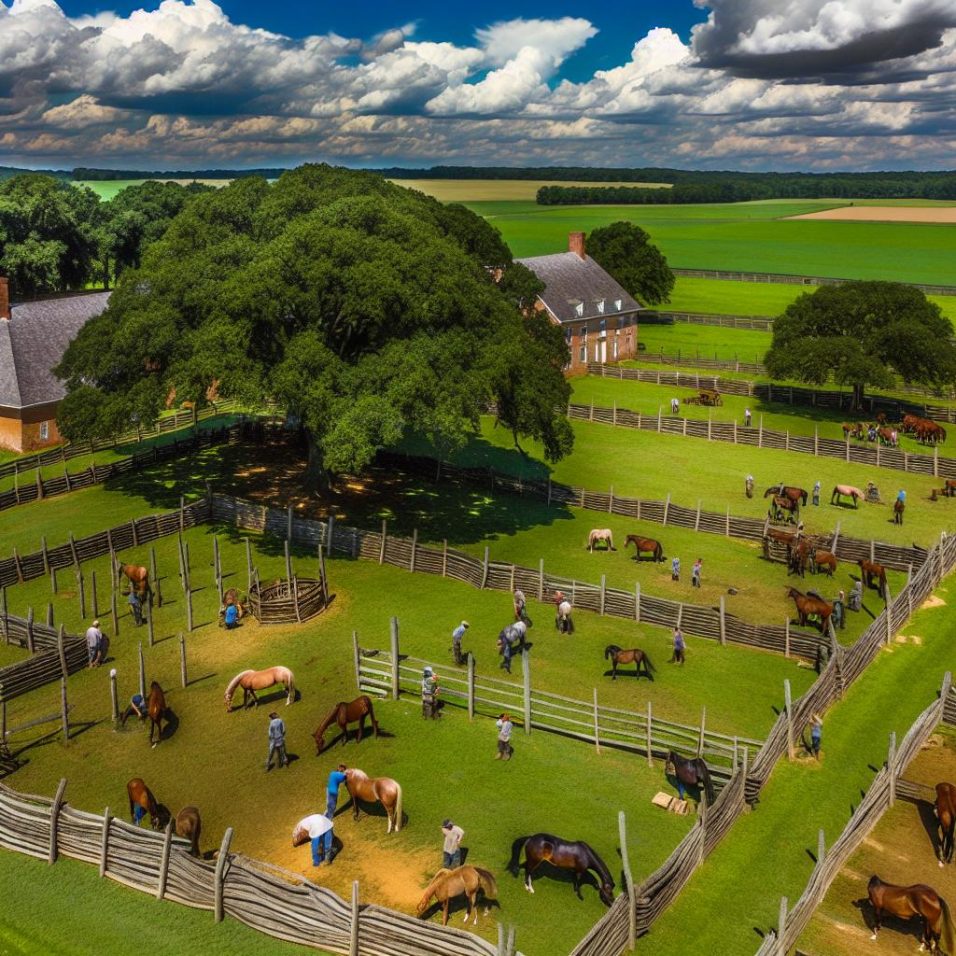The Colonial Beginnings
The state of Virginia, being one of the original 13 colonies of the United States, holds a remarkable place in the early development of American horse breeds. The establishment of this colony in 1607 marked a significant era in which horses were seen not just as animals, but as vital components of agricultural success, efficient transportation, and overall economic prosperity. During this period, horses played a fundamental role in shaping the agricultural and economic landscape of the colony. Initial imports of horses came from England and later from the Caribbean islands, which significantly influenced the foundational stock of American equine breeds.
The introduction of European horses brought new possibilities to the colonists, offering animals that were essential not only for tilling land but also for transporting goods and people across challenging terrains. The varied terrain of Virginia, from coastal plains to mountain ranges, necessitated the use of horses well-adapted to diverse conditions, further underscoring their importance to the colonial economy.
The Influence of English Breeds
Among the different breeds introduced, the English Thoroughbred stands out for its significant impact on the development of horse breeding practices in Virginia. These horses were renowned for their exceptional speed and endurance, qualities that were highly prized by the colonists. The use of Thoroughbreds in breeding programs aimed to improve the local horse stock, producing animals well-suited for dual purposes—serving both practical agricultural needs and providing leisure for the colonial elite.
This infusion of English bloodlines into the local horse population led to animals that were robust, versatile, and capable of performing various tasks with agility and speed. As these breeds adapted to the environmental and economic demands of the colony, they became an integral part of the work and leisure balance that characterized colonial life.
The Emergence of Unique American Breeds
One of the most noteworthy breeds that traces its origins back to these early breeding practices in Virginia is the American Quarter Horse. This breed gained acclaim for its remarkable ability to sprint short distances quickly and its exceptional agility, both of which were critical for ranching and herding activities—a common necessity in the colonial agrarian context.
The establishment of selective breeding practices focused on cultivating these attributes, ensuring that horses developed were not only swift and agile but also reliable. The colonial farmers had a pressing need for animals that could handle the rigorous demands of ranch life, thus leading to the creation of a breed that became renowned across America for its utility and performance. The development of the American Quarter Horse exemplifies the ingenuity and adaptation of Virginia’s horse breeders in response to their unique environment and circumstances.
Role in Racing and Leisure
Horse racing emerged as an immensely popular pastime in the colony of Virginia, further solidifying its reputation as a hub for exceptional horse breeds. The widespread popularity of racing indicated a shift in how horses were perceived—not merely as utilitarian animals but also as symbols of prestige and skill.
The traits of speed and finesse became highly desirable as the colonial aristocracy sought to indulge in this leisure activity, which was both a source of entertainment and a venue for social gatherings. The cultural fondness for horse racing in Virginia significantly influenced breeding practices, steering priorities towards developing animals that excelled in speed and elegance, thus blending utility with leisure.
Virginia’s racing culture also served as a catalyst for economic activity, with races drawing spectators and participants from across the colonies. This not only boosted local economies but also positioned Virginia as a premier destination for horse enthusiasts, both for trading horses and for participating in equestrian competitions.
Contemporary Influence
In contemporary times, Virginia persists as a pivotal player in the equine industry. Its rich heritage is exemplified through a continued influence on American horse breeding practices. The merging of historical horse breeds with modern breeding techniques ensures that Virginia’s legacy remains both preserved and relevant to current needs.
Virginia’s current equine industry thrives on the foundations laid by centuries of breeding excellence, adapting to modern challenges while honoring its storied past. Horse farms and stables across the state remain dedicated to breeding horses that uphold the high standards established by their colonial predecessors.
The interplay of tradition and innovation in Virginia’s horse breeding arena reflects the enduring impact of early colonial practices. The state’s commitment to excellence continues to position it prominently in the broader American equine industry, where the lessons and legacies of the past continue to guide future developments.
Those interested in delving deeper into the equine history of Virginia are encouraged to engage with local historical societies or equine organizations that hold a wealth of resources and insights. These bodies provide an in-depth look into the extensive history that has shaped not only Virginia’s equine heritage but also its broader cultural landscape, illuminating the profound influence of horses on the growth and evolution of the early American colonies.


